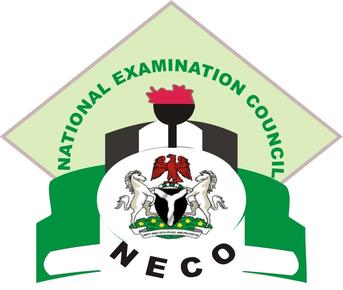Waec Mathematics Syllabus/Questions/Answers 2024/2025
Welcome to the almighty Waec Mathematics Syllabus, It is no longer news that Waec 2024/2025 registration has begun and the examination is very close. So many waec candidates have been asking questions about 2024 waec syllabus and topics to read so as to pass waec 2024 without much stress. See 2024 WAEC SPECIMEN/PRACTICALS The truth of the matter is that, the relevance of Jamb syllabus and expo on the topics to focus on cannot be overemphasized. There are four weapons you need you need to pass the WAEC 2024/2025 examination. They are:- WAEC Mathematics Syllabus
- WAEC past questions and answers
- Hot topics to read to pass waec 2024/2025
- The recommended waec textbooks and
- Your complete preparation.

Waec Mathematics Syllabus
WAEC MATHEMATICS SYLLABUS GENERAL GUIDE
For all papers which involve mathematical calculations, mathematical and statistical tables published for WAEC should be used in the examination room. However, the use of non-programmable, silent and cordless calculator is allowed. The calculator must not have a paper printout. Where the degree of accuracy is not specified in a question the degree of accuracy expected will be that obtainable from the WAEC mathematical tables. Waec Mathematics Syllabus Waec Mathematics Syllabus Waec Mathematics Syllabus Waec Mathematics Syllabus Waec Mathematics Syllabus Waec Mathematics Syllabus Waec Mathematics Syllabus Trigonometrical tables in the pamphlet have different columns for decimal fractions of a degree, not for minutes and seconds. No mathematical tables other than the above may be used in the examination. It is strongly recommended that schools/candidates obtain copies of these tables for use throughout the course. Candidates should bring rulers, protractors, pair of compasses and set squares for all papers. They will not be allowed to borrow such instruments and any other materials from other candidates in the examination hall. It should be noted that some questions may prohibit the use of tables and /or calculators. The use of slide rules is not allowed. Graph paper ruled in 2 mm squares, will be provided for any paper in which it is required. UNITS Candidates should be familiar with the following units and their symbols. Length 10000 millimetres (mm) = 100 centimetres (cm) = 1 metre (m) 1000 metres = 1 kilometre (km) Area 10,000 square metres (m2) = 1 hectare (ha) Cubic Capacity 1000 cubic centimetres (cm3) = 1 litre (1) Mass 1000 milligrammes (mg) = 1 gramme (g) 1000 grammes (g) = 1 kilogramme (kg) WEST AFRICAN SENIOR SCHOOL CERTIFICATE EXAMINATION MATHEMATICS (CORE)/GENERAL MATHEMATICS 324 CURRENCIES The Gambia – 100 bututs (b) = 1 dalasi (D) Ghana – 100 pesewas (p) = 1 Ghana cedi GH(¢) Liberia – 100 cents (c) = 1 dollar ($) *Nigeria – 100 kobo (k) = 1 naira (N) *Sierra Leone – 100 cents (c) = 1 leone (Le) U. K. – 100 pence (p) = 1 pound (£) U.S.A. – 100 cents (c) = 1 dollar ($) French speaking territories : 100 centimes (c) = 1 franc (fr) Any other units used will be defined. *General Mathematics/Mathematics (Core). AIMS OF THE WAEC MATHEMATICS SYLLABUS The syllabus is not intended to be used as a teaching syllabus. Teachers are advised to use their own National teaching syllabuses. The aims of the syllabus are to test: (i) computational skills; (ii) the understanding of mathematical concepts and their applications to everyday living; (iii) the ability to translate problems into mathematical language and solve them with related mathematical knowledge; (iv) the ability to be accurate to a degree relevant to the problems at hand; (v) precise, logical and abstract thinking. WAEC MATHEMATICS SYLLABUS: EXAMINATION FORMAT There will be two papers both of which must be taken. PAPER 1 – 11/2 hours PAPER 2 – 21/2 hours WAEC MATHEMATICS SYLLABUS TOPICS CONTENTS NOTES A. NUMBER AND NUMERATION (a) Number Bases (i) Binary numbers **(ii) Modular arithmetic Conversions from base 2 to base 10 and vice versa. Basic operations excluding division. Awareness of other number bases is desirable. Relate to market days, the clock etc. Truth sets (solution sets) for various open sentences, e.g. 3 x 2 = a(mod) 4, 8 + y = 4 (mod) 9. (b) Fractions, decimals and approximations (i) Basic operations on fractions and decimals. (ii) Approximations and significant figures Approximations should be realistic e.g. a road is not measured correct to the nearest cm. Include error. (c) Indices (i) Laws of indices. (ii) Numbers in standard form. Include simple examples of negative and fractions indices. e.g. 375.3 = 3.753 x 102 0.0035 = 3.5 x 10-3 Use of tables of squares, square roots and reciprocals. (d) Logarithms (i) Relationship between indices and logarithms e.g. y = 10k → K = log10 y (ii) Basic rules of logarithms i.e. log10 (pq) = log10P + log10q log10 (p/q) = log10 P – log10q log10Pn = nlog10P (iii) Use of tables of logarithms, Base 10 logarithm and Antilogarithm tables. Calculations involving multiplication, division, powers and square roots. (e) Sequence (i) Patterns of sequences. Determine any term of a given sequence. *(ii) Arithmetic Progression (A.P) Geometric Progression (G.P). The notation Un = the nth term of a sequence may be used. Simple cases only, including word problems. Excluding sum Sn. (f) Sets (i) Idea of sets, universal set, finite and infinite sets, subsets, empty sets and disjoint sets; idea of and notation for union, intersection and complement of sets. (ii) Solution of practical problems involving classification, using Venn diagrams. Notations: ℰ,, , , , , P1 (the complement of P). * Include commutative, associative and distributive properties. The use of Venn diagrams restricted to at most 3 sets. **(g) Logical reasoning Simple statements. True and false statements. Negation of statements. Implication, equivalence and valid arguments. Use of symbols : ~, , , . Use of Venn diagrams preferable. WEST AFRICAN SENIOR SCHOOL CERTIFICATE EXAMINATION MATHEMATICS (CORE)/GENERAL MATHEMATICS 327 TOPICS CONTENTS NOTES (h) Positive and Negative integers. Rational numbers The four basic operations on rational numbers Match rational numbers with points on the number line. Notation: Natural numbers (N), Integers (Z), Rational numbers (Q) (i) Surds Simplification and Rationalisation of simple surds. Surds of the form a and a b b where a is a rational and b is a positive integer. (j) Ratio, Proportion and Rates Financial partnerships; rates of work, costs, taxes, foreign exchange, density (e.g. for population) mass, distance, time and speed. Include average rates. (k) Variation Direct, inverse and partial variations. *Joint variations. Application to simple practical problems. (l) Percentages Simple interest, commission, discount, depreciation, profit and loss, compound interest and hire purchase. Exclude the use of compound interest formula. B. ALGEBRAIC PROCESSES (a) Algebraic Expressions (i) Expression of statements in symbols. (ii) Formulating algebraic expressions from given situations. (iii) Evaluation of algebraic expressions. eg. Find an expression for the cost C cedis of 4 pears at x cedis each and 3 oranges at y cedis each C = 4x + 3y If x = 60 and y = 20. Find C. (b) Simple operations on algebraic xpressions. (i) Expansion (ii) Factorisation e.g. (a+b) (c+d). (a+3) (c+4) Expressions of the form (i) ax + ay (ii) a (b+c) +d (b+c) (iii) ax2 + bx +c where a,b,c are integers (iv) a2 – b2 Application of difference of two squares e.g. 492 – 472 = (49 + 47) (49 – 47) = 96 x 2 = 192 (c) Solution of linear equations (i) Linear equations in one variable (ii) Simultaneous linear equations in two variables. (d) Change of subject of a formula/relation (i) Change of subject of a formula/relation (ii) Substitution e.g. find v in terms of f and u given that 1 1 1 — = — + — ƒ u v (e) Quadratic equations (i) Solution of quadratic equations (ii) Construction of quadratic equations with given roots. (iii) Application of solution of quadratic equations in practical problems. Using ab = 0 either a = 0 or b = 0 * By completing the square and use of formula. Simple rational roots only. e.g. constructing a quadratic equation. Whose roots are –3 and 5/2 => (x = 3) (x – 5/2) = 0. (f) Graphs of Linear and quadratic functions. (i) Interpretation of graphs, coordinates of points, table of values. Drawing quadratic graphs and obtaining roots from graphs. (ii) Graphical solution of a pair of equations of the form y = ax2 + bx + c and y = mx + k (iii) Drawing of a tangent to curves to determine gradient at a given point. (iv) The gradient of a line ** (v) Equation of a Line Finding: (i) the coordinates of the maximum and minimum points on the graph; (ii) intercepts on the axes. Identifying axis of Symmetry. Recognising sketched graphs. Use of quadratic graph to solve a related equation e.g. graph of y = x2 + 5x + 6 to solve x2 + 5x + 4 = 0 (i) By drawing relevant triangle to determine the gradient. (ii) The gradient, m, of the line joining the points (x1, y1) and (x2, y2) is y2 – y1 m = x2 – x1 Equation in the form y = mx + c or y – y1 = m(x-x1) (g) Linear inequalities (i) Solution of linear inequalities in one variable and representation on the number line. (ii) Graphical solution of linear inequalities in two variables Simple practical problems ** (h) Relations and functions (i) Relations (ii) Functions Various types of relations One – to – one, many – to – one, one – to – many, many – to – many The idea of a function. Types of functions. One – to – one, many – to – one. (i) Algebraic fractions Operations on algebraic fractions (i) with monomial denominators. (ii) with binomial denominators. Simple cases only e.g. 1 1 x + y — + — = —- (x 0, and y0) x y xy Simple cases only e.g. 1 + 1 = 2x – a – b x –b x – a (x-a) (x – b) where a and b are constants and xa or b. Values for which a fraction is not defined e.g. 1 x + 3 is not defined for x = -3. C. MENSURATION (a) Lengths and Perimeters (i) Use of Pythagoras theorem, sine and cosine rules to determine lengths and distances. (ii) Lengths of arcs of circles. Perimeters of sectors and Segments. *(iii) Latitudes and Longitudes. No formal proofs of the theorem and rules are required. Distances along latitudes and longitudes and their corresponding angles. (b) Areas (i) Triangles and special quadrilaterals – rectangles, parallelograms and trapezia. (ii) Circles, sectors and segments of circles. (iii) Surface areas of cube, cuboid, cylinder, right triangular prisms and cones. *Spheres. Areas of similar figures. Include area of triangles is ½ base x height and *1/2 abSin C. Areas of compound shapes. Relation between the sector of a circle and the surface area of a cone. (c) Volumes (i) Volumes of cubes, cuboid, cylinders, cones and right pyramids. * Spheres. (ii) Volumes of similar solids Volumes of compound shapes. D. PLANE GEOMETRY (a) Angles at a point (i) Angles at a point add up to 360. (ii) Adjacent angles on a straight line are supplementary. (iii) Vertically opposite angles are equal. The results of these standard theorems stated under contents must be known but their formal proofs are not required. However, proofs based on the knowledge of these theorems may be tested. The degree as a unit of measure. Acute, obtuse, reflex angles. (b) Angles and intercepts on parallel lines (i) Alternate angles are equal. (ii) Corresponding angles are equal. (iii) Interior opposite angles are supplementary. *(iv) Intercept theorem Application to proportional division of a line segment. (c) Triangles and other polygons (i) The sum of the angles of a triangle is 2 right angles. (ii) The exterior angle of a triangle equals the sum of the two interior opposite angles. (iii) Congruent triangles. (iv) Properties of special triangles – isosceles, equilateral, right-angled. (v) Properties of special quadrilaterals – parallelogram, rhombus, rectangle, square, trapezium. (vi) Properties of similar triangles. (vii) The sum of the angles of a polygon. (viii) Property of exterior angles of a polygon. (ix) Parallelograms on the same base and between the same parallels are equal in area. Conditions to be known but proofs not required. Rotation, translation, reflection and lines of symmetry to be used. Use symmetry where applicable. Equiangular properties and ratio of sides and areas. (d) Circles (i) Chords (ii) The angle which an arc of a circle subtends at the centre is twice that which it subtends at any point on the remaining part of the circumference. (iii) Any angle subtended at the circumference by a diameter is a right angle. Angles subtended by chords in a circle, at the centre of a circle. Perpendicular bisectors of chords. (iv) Angles in the same segment are equal (v) Angles in opposite segments are supplementary. (vi) Perpendicularity of tangent and radius. (vii) If a straight line touches a circle at only one point and from the point of contact a chord is drawn, each angle which this chord makes with the tangent is equal to the angle in the alternative segment. (e) Construction (i) Bisectors of angles and line segments. (ii) Line parallel or perpendicular to a given line. (iii) An angle of 90º, 60º, 45º, 30º and an angle equal to a given angle. (iv) Triangles and quadrilaterals from sufficient data. Include combination of these angles e.g. 75º, 105º, 135º, etc. (f) Loci Knowledge of the loci listed below and their intersections in 2 dimensions. (i) Points at a given distance from a given point. (ii) Points equidistant from two given points. (iii) Points equidistant from two given straight lines. (iv) Points at a given distance from a given straight line. Consider parallel and intersecting lines. E. TRIGONOMETRY (a) Sine, cosine and tangent of an angle. (b) Angles of elevation and depression. (c) Bearings (i) Sine, cosine and tangent of an acute angle. (ii) Use of tables. (iii) Trigonometric ratios of 30º, 45º and 60º. *(iv) Sine, cosine and tangent of angles from 0º to 360º. *(v) Graphs of sine and cosine. Calculating angles of elevation and depression. Application to heights and distances. (i) Bearing of one point from another. (ii) Calculation of distances and angles. Without use of tables. Related to the unit circle. 0º ≤ x ≥ 360º Easy problems only Easy problems only Sine and cosine rules may be used. E. STATISTICS AND PROBABILITY (a) Statistics (i) Frequency distribution. (ii) Pie charts, bar charts, histograms and frequency polygons. (iii) Mean, median and mode for both discrete and grouped data. (iv) Cumulative frequency curve, median; quartiles and percentiles. (v) Measures of dispersion: range, interquartile range, mean deviation and standard deviation from the mean. Reading and drawing simple inferences from graphs and interpretations of data in histograms. Exclude unequal class interval. Use of an assumed mean is acceptable but nor required. For grouped data, the mode should be estimated from the histogram and the median from the cumulative frequency curve. Simple examples only. Note that mean deviation is the mean of the absolute deviations. (b) Probability (i) Experimental and theoretical probability. (ii) Addition of probabilities for mutually exclusive and independent events. (iii) Multiplication of probabilities for independent events. Include equally likely events e.g. probability of throwing a six with fair die, or a head when tossing a fair coin. Simple practical problems only. Interpretation of ‘and’ and ‘or’ in probability. **(G) VECTORS AND TRANSPORMATIONS IN A PLANE (a) Vectors in a Plane. (i) Vector as a directed line segment, magnitude, equal vectors, sums and differences of vectors. (ii) Parallel and equal vectors. (iii) Multiplication of a vector by a scalar. (iv) Cartesian components of a vector. Column notation. Emphasis on graphical representation. Notation 0 for the zero vector. (b) Transformation in the Cartesian Coordinate plane. (i) Reflection (ii) Rotation (iii) Translation The reflection of points and shapes in the x and y axes and in the lines x = k and y = k, where k is a rational number. Determination of the mirror lines of points/shapes and their images. Rotation about the origin. Use of the translation vector. Waec Mathematics Syllabus Waec Mathematics Syllabus Waec Mathematics Syllabus READ: Waec Syllabus and hot topics for all subjects That is all on Waec Mathematics Syllabus Questions and Answers for 2024/2025 Exam.Categories: WAEC Syllabus Past Questions and Answers
0 Responses




